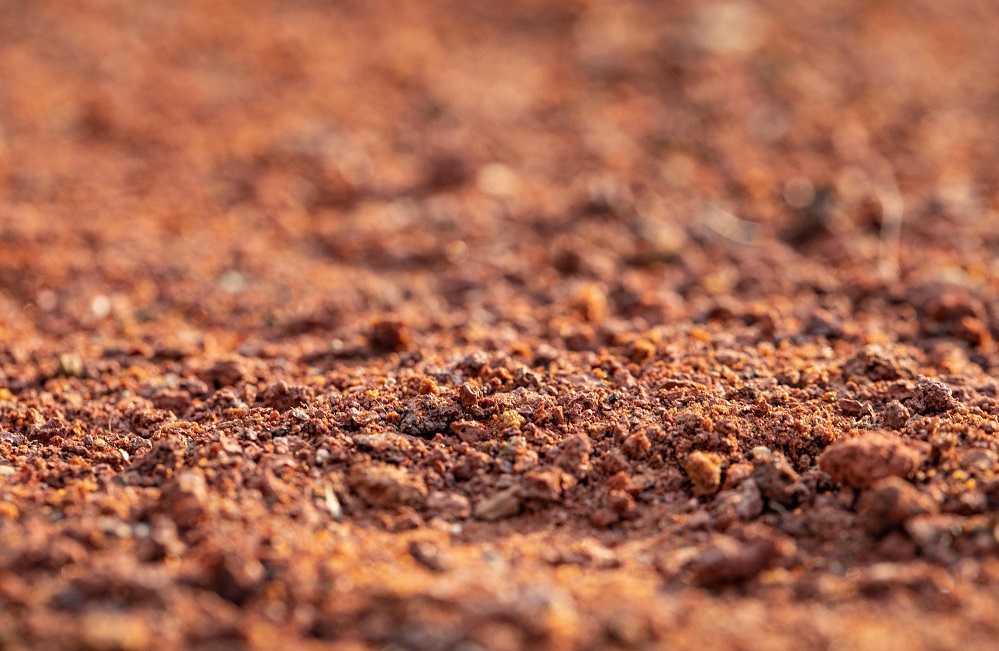
Natural zeolites are known for their benefit on many aspects. They are used in many things include cosmetic, automotive, and agriculture. In agriculture, natural zeolites have been used as feed additive, water conditioner, soil conditioner, and even for growing medium for hydroponics. Farmers used zeolite for good reason. It could help their plants have more nutrients or bind heavy metals that cause bad effect on fish, or reducing ammonia production from animal feces.
Benefit of natural zeolite in agriculture have been mentioned in our article before. Please check our article about Uses of Zeolite in Agriculture, and check our full articles at Nusagri’s Blog. In this article, we will discuss about zeolite application in fertilizer for plants. The discussion included properties of zeolite and how zeolite affect the growth of plants.
Natural Zeolite came along with volcano eruption. Geochemists and mineralogists estimate that zeolites are the product of frozen volcanoes into volcanic rocks, sedimentary rocks and metamorphic rocks which subsequently undergo weathering due to the influence of heat and cold so that zeolite minerals eventually formed.
Zeolite properties have been discovered by studies. As result, studies found that zeolite contained up to 70% of high ration between silica and aluminum oxides. Study also found morphology of the porous structure on natural zeolites that able to absorb and desorb substances. Zeolite also have ability to selective adsorption of large cations. This is due to the proximity of the ions size that defined as strong Coloumb interaction with structure of zeolite. Their physicochemical properties essentially depend on the content of the
zeolitic phase in the rock, such as cations exchange form and nature of impurities. Natural zeolites are porous systems, the primary porosity of them is determined by the micropores of crystals, and the secondary one – by the transitional pores and macropores. Natural zeolites start to be applied on multi sectors of agriculture. One of them is become fertilizer mixer for plants growth.

Plants can growth because of soil as their growing medium that contain water and nutrients as growing needs. Those are required for photosynthesis reaction to produce energy. Photosynthesis create food for plants using water, carbon dioxides, sun light, and minerals. That make plants grow and produce resource for us. Soil is one of the most important environmental factors and is considered the main source in providing essential plant nutrients, water reserves and a medium for plant growth. Giving soil a fertilizer purposed to increase nutrients needed by plants like nitrogen, potassium, kalium, magnesium, calcium, and many more. With eligible nutrient, plants will produce higher quality and quantity of fruits and any parts that consumed by human. Each minerals affect certain effect on plants growth. Fertilizer also used to neutralizing soil pH for better environment.
Fertilizer is divided into two categories, organic fertilizer and inorganic fertilizer. Organic fertilizer is fertilizer obtained from weathering and decomposition of organic materials that exist in nature, for example compost. Organic fertilizer is difficult to regulate its nutrient content so it is not necessarily suitable to the needs of plants. Meanwhile, inorganic fertilizers are fertilizers made with certain mineral contents so that they have the quantities needed by plants.
Studies found the effect of zeolite in fertilizer. The experiment showed that fertilizer mixed with zeolite resulted in the same growth and productivity, although the fertilizing doses were reduced. This means that zeolite increase fertilizing efficiency. This is because of zeolite properties. Zeolites have porous surface that able to bind nutrients.
Mostly, fertilizer will lose their nutrients by earth-water flow underground. These nutrients carried away by water, so it can’t be absorbed by plants. This case occurred often during rainy season. Rainy season decrease fertilizer efficiency in soil. Zeolite bind nutrients so they are not carried away by water. This is needed not only in rainy season, but also in any season. Fertilizer consumption is decrease with zeolite.
That’s all of our article today. The conclusion is zeolite will increase the efficiency of fertilizer. Zeolite will decrease the consumption of fertilizer for plants. Zeolite can adsorb substance because of is porous properties. Within fertilizer, zeolite bind nutrients so they are not easily carried away by water in soil.
Thank you for reading our article. Keep in touch with Nusagri to get more information about zeolite. Nusagri.co.id is the pioneer in exploitation and processing of zeolite minerals in Indonesia used in Agricultural and multi sectors. Nusagri exported tons of zeolite for many countries including India and Malaysia. Please check our website and social media for further information about zeolite.







